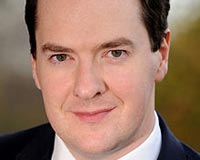 “Fiddling while the high street burns.” Congratulations to whoever it was at Colliers International who turned that wonderful phrase in response to this week’s Autumn Statement.
“Fiddling while the high street burns.” Congratulations to whoever it was at Colliers International who turned that wonderful phrase in response to this week’s Autumn Statement.
It was a shame that the chancellor kicked business rates reform into the long grass (again), in what was mostly a good deal for property.
A shrewd political statement of questionable economic merit was another assessment, as George Osborne’s stamp duty reform dealt skillfully with Labour’s mansion tax commitment which, make no mistake, was playing well in most parts of the country.
Yes, shares in Berkeley Group fell 3% on the news that stamp duty would rise for buyers of £1.5m-plus homes, the third successive statement to deliver a hit to international investors in London residential. But to the wider electorate that would be of little consequence.
Meanwhile, with measures around compulsory purchase orders, relief from stamp duty land tax for investors transferring portfolios into property authorised investment funds and co-ownership authorised contractual schemes, there were sizeable pockets of cheer. Infrastructure, devolution and the tantalising probability that the government would return to house building were also present and welcome.
On business rates there was less to celebrate. Yes, the rate rises will be capped at 2% from April 2015, but the ducking of an immediate review of the system was unimpressive, to say the least.
But if you were in any doubt how central the residential market will be to the pre-election debate, consider this: the chancellor mentioned the word “house” in his speech 22 times, “home” 14, “housing” and “property” three times each and “residential” once.
As the economy strengthens this general election may not be fought on living standards but on living rooms, especially around how many new ones can be provided up and down the country.
■ Further good news. A draft right to light law put forward by the Law Commission could untie what has become a “Gordian knot of complexity and uncertainty”. (Disclosure: that phrase is borrowed from Harry Badham, head of development at Axa… what has the industry been drinking this week?)
The consultation comes after a 2010 court ruling in which a Highcross subsidiary lost its case against neighbouring property owner Marcus Heaney, forcing it to partially demolish a building in Leeds.
Under the draft, landowners would be required to declare their intentions to seek rights to light injunctions within a set deadline. Claimants would lose their right to an injunction to protect their right to light if they do not notify developers within a specified time frame. And the bill also sets out a test to clarify when courts can order damages instead of stopping development or ordering demolition.
So far, so sensible. But the devil, as ever, will be in the detail.
■ This week’s EG Rich List – now in its 12th year – reveals much about who wields real financial power in London. Until last year the Duke of Westminster had topped every EG Rich List. In 2013 he slipped to number four, as Asian investors made their mark in London. In 2014 that’s changed again, with the Duke falling to seventh.
We have a new number one, Amancio Ortega, the Spanish founder of Zara; Brazilian Joseph Safra (the new owner of the Gherkin, EC3) at number two; Italian-born, Swiss businessman Ernesto Bertarelli at number three; and Hong Kong property magnate Henry Cheng Kar-Shun at number four. That tells you all you need to know about how London is now a world city like no other.
Uniquely, the capital is both a safe haven and a property market that has allowed many investors to accumulate vast wealth. Bear in mind its cultural qualities too and the upshot is that for high-net- worth individuals with an appetite for property, there is simply no better place on the planet to work, invest and play.











